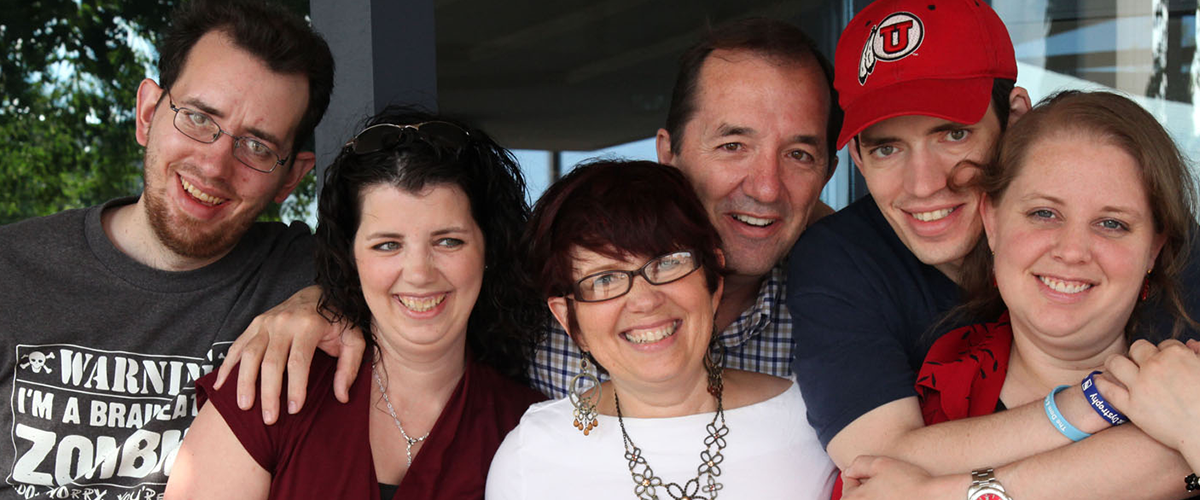Despite their considerable burden in DM1, attention to respiratory complications has lagged behind that given to other organ systems. This pattern is not unique to DM1--it has been seen for other types of muscular dystrophy, with the slow recruitment of pulmonologists, and the clinical assessment measures they can bring to bear. In addition to improving respiratory management and reducing morbidity and mortality for those with DM1, increased attention to respiratory function may reveal outcome measures useful in interventional clinical trials. In a slowly progressive, neuromuscular disease like DM1, it is important to consider all endpoint measures with the potential to report on meaningful changes within the normal duration of an interventional clinical trial—respiratory dysfunction measures may meet this need.
This last month has brought the publication of a new original cross-sectional study and a detailed review article, both focused on respiratory dysfunction in DM1.
Publication of a Multicenter, Cross-Sectional Study in DM1
Dr. Gabriella Silvestri (Gemelli IRCSS and Catholic University of the Sacred Heart) and colleagues have published an analysis of respiratory function in a cohort of 268 genetically confirmed adult patients with DM1. Spirometric examinations included forced expiratory volume (FEV1), forced vital capacity (FVC), FEV1/FVC, total lung capacity (TLC), vital capacity (VC), maximum inspiratory pressure (MIP), and maximum expiratory pressure (MEP). Indication for and compliance with non-invasive ventilation (NIV) was also determined.
The study cohort presented with a wide spectrum of skeletal muscle involvement as measured by MIRS score. MIP and MEP values established that respiratory muscle fatigue is the major determinant of restricted lung function. Nearly 52% of patients assessed exhibited a restrictive syndrome detected by spirometry, with frequent reports of excessive daytime sleepiness, snoring, exertion dyspnea, and rest dyspnea. Males were at higher risk for restrictive syndrome. 36% of the cohort met clinical criteria to initiate NIV, but only 57% of those were compliant with treatment. The prevalence of mexiletine use was too low in this cohort to assess its value for treating respiratory dysfunction in DM1.
Based on univariant analysis, FEV1, TLC, VC, MIP, and MEP differentiated restricted from non-restricted patients. Restricted patients were also distinguished by CTG repeat length, MIRS score, obstructive sleep apnea, conduction abnormalities, and prophylactic pacemaker implantation. By multivariant analysis, only MIRS and CTG length were independently predictive of restrictive ventilation.
Additional Insights from a Literature Review
A literature review of major databases (PubMed, Embase, Cochrane, etc.) formed the basis of a new review article on respiratory dysfunction in DM1 by Dr. Aaron Hawkins (Griffith University) and colleagues (Hawkins et al., 2019). The review was carried out in accordance with PRISMA guidance for systematic reviews—the initial 1,432 publications (appearing between 1964 and 2017) were culled to 45 articles classified as of “strong” quality.
Nearly all studies reported abnormal respiratory function values in DM1 with restricted ventilation—FVC and VC were the most commonly impaired measures. Restriction was associated with with alveolar hypoventilation, chronic hypercapnia, sleep apnea and sleep disordered breathing. In contrast to the findings of Rossi et al. (2019), respiratory dysfunction was associated with BMI; this and other issues (e.g., differences in MIP vs. MEP) are discussed in the Rossi paper.
The literature review showed divergence in whether there was an association between expanded CTG repeat length and respiratory dysfunction, as was found by Rossi et al. (2019). Meta data also was inconclusive as to whether there was a progression of respiratory abnormalities over time—this confusion strongly argues for careful, longitudinal studies of respiratory function in DM1 and a determination as to whether respiratory measures have value as clinical endpoints in interventional clinical trials. The majority of studies assessed in this review reported significant prevalence of sleep apnea, sleep disordered breathing, or significant overnight oxygen desaturations in DM1.
Finally, although there is considerable speculation in the literature, the authors of the review assert that there is not yet clarity as to the mechanisms (central vs. peripheral) of respiratory dysfunction in DM1. Better understanding of the natural history of respiratory dysfunction and its causes is needed to inform the design and conduct of clinical evaluations of candidate therapies for DM1.
References:
Prevalence and predictor factors of respiratory impairment in a large cohort of patients with Myotonic Dystrophy type 1 (DM1): A retrospective, cross sectional study.
Rossi S, Della Marca G, Ricci M, Perna A, Nicoletti TF, Brunetti V, Meleo E, Calvello M, Petrucci A, Antonini G, Bucci E, Licchelli L, Sancricca C, Massa R, Rastelli E, Botta A, Di Muzio A, Romano S, Garibaldi M, Silvestri G.
J Neurol Sci. 2019 Feb 7;399:118-124. doi: 10.1016/j.jns.2019.02.012. [Epub ahead of print]
Respiratory dysfunction in myotonic dystrophy type 1: A systematic review.
Hawkins AM, Hawkins CL, Abdul Razak K, Khoo TK, Tran K, Jackson RV.
Neuromuscul Disord. 2018 Dec 9. pii: S0960-8966(18)30449-8. doi: 10.1016/j.nmd.2018.12.002. [Epub ahead of print] Review.

